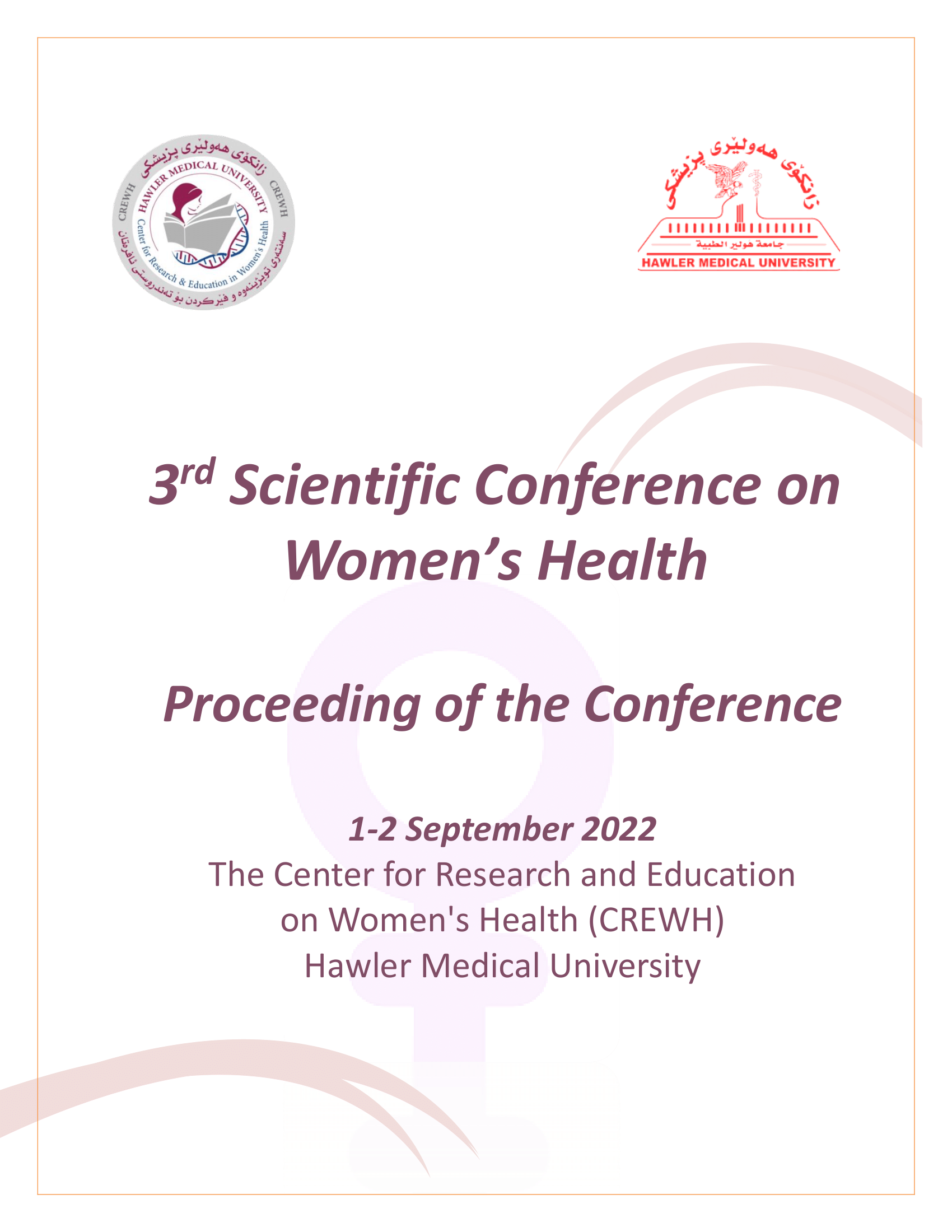The Effects of Non-Ionizing Radiation for using Electronic Devices on Female Child's Health
DOI:
https://doi.org/10.15218/crewh.2022.05Keywords:
Non-ionizing radiation, Radio frequency, Children healthAbstract
Background and objective: Technology is everywhere, usage of electronics turns into a wide part of the lives of young and growing children's daily routine nowadays, and children are more at risk of this suddenly developing of technology. RFs are non-ionizing radiation including wavelengths varying from 3 kHz to 300 MHz and microwaves ranging from 300 MHz to 300 GHz. The main purpose of the research was to determine the impact of electronic device use and daily screen time on physical and physiological health.
Methods: In this study, a Google form for the questionnaire was used for data collection in 2021, and it was distributed to some primary schools in Erbil. The parents were asked to respond to questionnaire questions about their children.
Result: According to the responses of 68 percent of parents, the highest percentage of age in this study is between 3 and 5 years (31.4 percent). The majority of participants go to bed between 11 and 11:59 p.m., and the majority of them wake up between 10 and 10:59 a.m. (24.5 percent ). 27.5 percent of children spend more than 7 hours per day on electronic devices while only 22.5 % use 1-2 hours per day.
Conclusion: As a result of the survey and mixed with most of the findings showing that the negative impact of using the electronic device in the development and growth and health effects however the effect of the electronic device on children depending on the time duration watching the electronic screen per a day.
References
Marinelli S. A Child’s World: How Electronics Influence Children’s Language, Physical, and Social-Emotional Development. :49.
Jamir L, Duggal M, Nehra R, Singh P, Grover S. Epidemiology of technology addiction among school students in rural India. Asian J Psychiatry. 2019 Feb;40:30–8.
Tran BX, Ha GH, Vu GT, Hoang CL, Nguyen SH, Nguyen CT, et al. How have excessive electronics devices and Internet uses been concerned? Implications for global research agenda from a bibliometric analysis. J Behav Addict. 2020 Jun;9(2):469–82.
Miller AB, Sears ME, Morgan LL, Davis DL, Hardell L, Oremus M, et al. Risks to Health and Well-Being From Radio-Frequency Radiation Emitted by Cell Phones and Other Wireless Devices. Front Public Health. 2019 Aug 13;7:223.
Ganganahalli P, Tondare M, Durgawale P. Use of Electronic Gadgets among Medical Students in Western Maharashtra, India. Int J Health Sci Res. 2014 Oct 1;4:26.
Dong-Hoo L. Women’s Creation of Camera Phone Culture. Fibreculture J. 2005 Jan 1;6.
Khan AR, Zaman N, Muzafar S. Health Hazards Linked to Using Mobile Cellular Phones. J Inf Commun Technol JICT. 2008;2(2):8.
Baan R. The International Agency for Research on Cancer (IARC) is the cancer-research Institute of the World Health Organization. 2011;4.
Belpomme D, Hardell L, Belyaev I, Burgio E, Carpenter DO. Thermal and non-thermal health effects of low intensity non-ionizing radiation: An international perspective. Environ Pollut. 2018 Nov;242:643–58.
J L, R C, S D, R P, L A. Viewing distance and eyestrain symptoms with prolonged viewing of smartphones. Clin Exp Optom [Internet]. 2017 Mar [cited 2021 Nov 21];100(2). Available from: https://pubmed.ncbi.nlm.nih.gov/27716998/
Challis LJ. Mechanisms for interaction between RF fields and biological tissue. Bioelectromagnetics. 2005;26(S7):S98–106.
Jokela K, Puranen L, Sihvonen AP. Assessment of the magnetic field exposure due to the battery current of digital mobile phones. Health Phys. 2004 Jan;86(1):56–66.
Hardell L, Sage C. Biological effects from electromagnetic field exposure and public exposure standards. Biomed Pharmacother Biomedecine Pharmacother. 2008 Feb;62(2):104–9.
Rosenfield M. Computer vision syndrome: a review of ocular causes and potential treatments. Ophthalmic Physiol Opt J Br Coll Ophthalmic Opt Optom. 2011 Sep;31(5):502–15.
Cardis E, Deltour I, Mann S, Moissonnier M, Taki M, Varsier N, et al. Distribution of RF energy emitted by mobile phones in anatomical structures of the brain. Phys Med Biol. 2008 Jun 7;53(11):2771–83.
Kheifets L, Repacholi M, Saunders R. The sensitivity of children to electromagnetic fields. :14.
Acar GO, Yener HM, Savrun FK, Kalkan T, Bayrak I, Enver O. Thermal effects of mobile phones on facial nerves and surrounding soft tissue. The Laryngoscope. 2009 Mar;119(3):559–62.
Akar A, Karayiğit MÖ, Bolat D, Gültiken ME, Yarim M, Castellani G. Effects of low level electromagnetic field exposure at 2.45 GHz on rat cornea. Int J Radiat Biol. 2013 Apr;89(4):243–9.
Leitgeb N. Mobile phones: are children at higher risk? Wien Med Wochenschr. 2008 Jan 1;158(1):36–41.
Vg K, C T, M K, L H, M C. Cell phones and brain tumors: a review including the long-term epidemiologic data. Surg Neurol [Internet]. 2009 Sep [cited 2021 Nov 21];72(3). Available from: https://pubmed.ncbi.nlm.nih.gov/19328536/
Kheifets L, Repacholi M, Saunders R, van Deventer E. The Sensitivity of Children to Electromagnetic Fields. Pediatrics. 2005 Aug 1;116(2):e303–13.
Bazan HEP. Cellular and molecular events in corneal wound healing: significance of lipid signalling. Exp Eye Res. 2005 Apr;80(4):453–63.
Kim J, Hwang Y, Kang S, Kim M, Kim TS, Kim J, et al. Association between Exposure to Smartphones and Ocular Health in Adolescents. Ophthalmic Epidemiol. 2016 Jul 3;23(4):269–76.
Downloads
Published
How to Cite
Issue
Section
License
Copyright (c) 2022 Ronak Ali, Hataw Mohammed

This work is licensed under a Creative Commons Attribution-NoDerivatives 4.0 International License.











